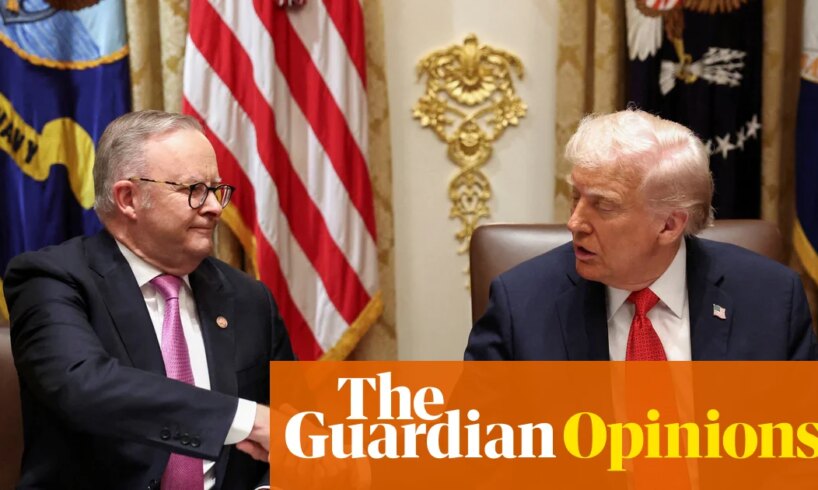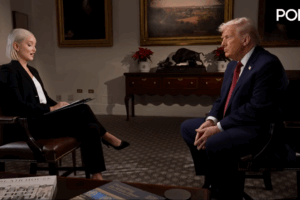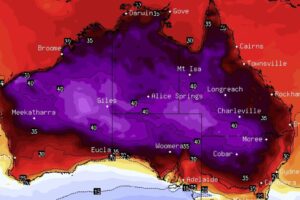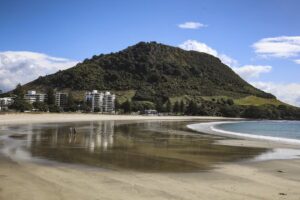
Those waiting, hoping even, to see the Australian prime minister humiliated by the US president when they met at the White House this week were disappointed. They should not have been.
Although the president has turned his unpredictability into an asset – no one knows what I am going to do – Australian political leaders have, over a long time, proved surprisingly adept when dealing with geopolitical uncertainty.
They did it during the world wars, then when the British empire imploded and Britain shifted its trading allegiance to Europe and later when the penny dropped that the nation’s future lay in the Asian hemisphere.
On each occasion the recalibration involved an alignment of economic and security interests, and confidence that the vast land mass of the Australian continent was an inexhaustible resource which could be offered to the new best friend – for mines, military bases, agriculture and more mines.
That they generally managed to do this without appearing too obsequious and maintaining a distinctive self-deprecating sense of humour – thank you Kevin Rudd for being the fall guy this time – is a marker of national distinctiveness.
But so is the enduring sense since colonial days that the land is there to be used, traded, exploited, mined and developed.
‘Ready to go’: Trump and Albanese sign multibillion-dollar critical minerals agreement – video
Australia is the only developed economy where the land and its bounty remains so central to economic activity, whatever the environmental impact. Although around half the country is now covered by native title, that is rarely mentioned and still comparatively little of the vast wealth generated from the land flows to traditional owners.
When Anthony Albanese added his squishy, lopsided signature to the president’s practised staccato on a multi-billion dollar deal to find, extract and process rare earths and critical minerals, he was in a long lineage of political leaders who have offered Australian resources to an ally.
In this case, as in so many before, it came with the promise that Australia would be more than a quarry, of using the opportunity to develop enduring refinement and processing capacity to leave more than holes in the ground and the industrial infrastructure of extraction.
In the long history of such deals, it is easy to hear the echoes of the past.
But one – the deal attorney general Billy Hughes negotiated during the first world war – leaps out for its extraordinary parallels. No doubt those banking on a “future made in Australia” are hoping that the rare earths and critical minerals deal will deliver similar fruits and also transform the economy into one that is more diverse and complex.
In 1915, as the war escalated, Hughes attended an Imperial Conference in London accompanied by WS Robinson, chief adviser to WL Baillieu, head of the Collins House group of companies.
Britain at war was in desperate need of the lead, zinc, silver and copper that Australia had in abundance. At that meeting Hughes and Robinson negotiated a deal that, over time, transformed the Australian economy and created extraordinary wealth for a handful of families.
The British government agreed to buy virtually all the minerals produced by the Collins House companies. It was a deal that lasted until 1930, at inflated war-time prices.
As a result, the Australian conglomerate was able to develop and expand lead and zinc smelters and acquire a copper refinery. The steady flow of money enabled the Collins House group to drive industrial development, and its activities soon extended to manufacturing fertilisers, beer, paper, cotton, rubber, sugar and paint, producing newspapers and even establishing an aircraft industry.
Its dominance of Australian industry continued until the globalisation and deregulation of the economy in the 1980s saw many of the companies with roots in the Collins House group spin off and become international businesses or subsidiaries of even bigger global corporations.
The parallels continue.
Just as now the concern is that Australia is economically dependent on China to buy its resources, at the beginning of the war 80% of the metal extracted from Broken Hill was sold to German companies. This led to charges that Collins House was trading with the enemy, and a raid, on Hughes’ order, of the company by soldiers carrying bayonets. According to Peter Yule, W L Baillieu’s biographer, this helped focus his mind on new markets.
At the time there was virtually no refining capacity in Australia apart from the lead smelter at Port Pirie, which Baillieu had acquired from BHP. Energy, then as now, was expensive. The Tasmanian government’s adoption of (renewable) hydroelectricity, changed this and made it possible to establish the zinc smelter at Risdon, outside Hobart.
It is striking that these smelters, which grew initially as a result of the deal Hughes negotiated, have recently received government support to continue their operations.
When commentators sneer at the use of government money for industrial development, it is worth remembering that it was always thus for what is now called “Team Australia”. What the Trump and Xi regimes have done is push this into the open, rather than hide behind the fiction of autonomous markets. Companies always respond to the settings governments establish and generally take any money on offer.
The aim now is to ensure that these settings are such that they benefit us all, not just the chosen few members of the team sitting beside the political negotiators.
Julianne Schultz is the author of The Idea of Australia. The third episode of the Blackfella/SBS series inspired by her book, Dreams of Land, will broadcast on 29 October





